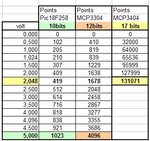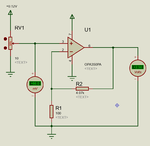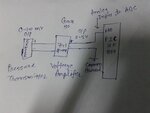ecaits
Member level 4
Dear Sir,
I have used ADC in PIC16F877 with hi-tech C compiler. I am measuring pressure in field through pressure transmitter giving 0-100mV. I am getting constant mV from pressure transmitter but when I am giving it to my controller, its fluctuate lots. My ADC resolution is 4.88 mV (analog input range 0-5V).
How can I solve my problem???
Nirav
I have used ADC in PIC16F877 with hi-tech C compiler. I am measuring pressure in field through pressure transmitter giving 0-100mV. I am getting constant mV from pressure transmitter but when I am giving it to my controller, its fluctuate lots. My ADC resolution is 4.88 mV (analog input range 0-5V).
How can I solve my problem???
Nirav



